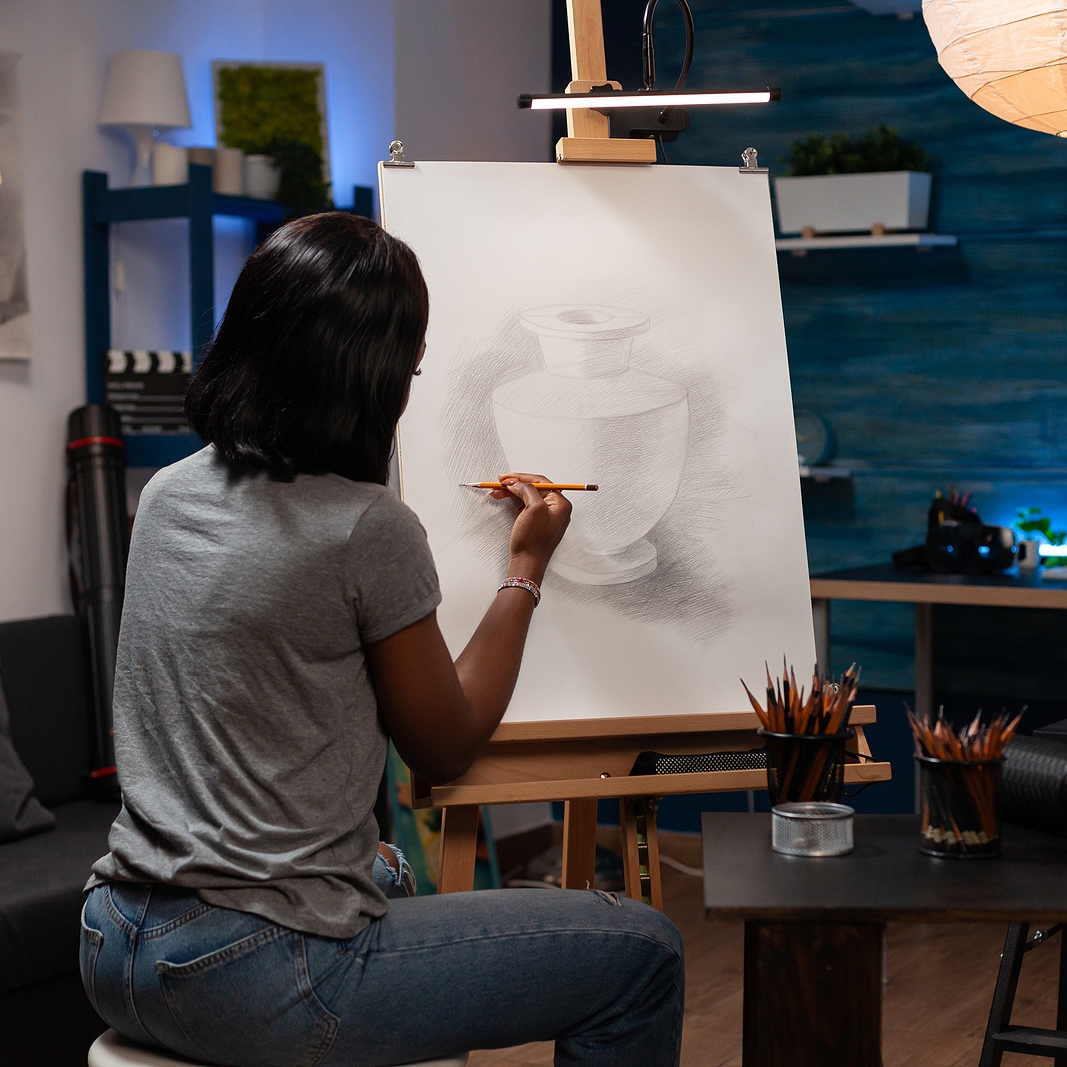
The world of education is constantly changing, and the combination of imagination and information has become a key element in the formation of well-rounded people. Art used to exist in its own world, but now, it is an important part of education. This has caused a paradigm shift that goes beyond standard limits.
The Creative Spark in Learning
At the heart of education lies the quest to inspire curiosity and foster a genuine passion for learning. This pursuit is fueled by the creative spark that ignites when students are given the freedom to explore and express themselves. Art, in its myriad forms, serves as a potent catalyst for this spark. When students do art, they tap into a well of thought that often stays quiet in standard classrooms. This artistic process helps students see learning as an interesting journey instead of just a list of things to do.
A creative spark in learning is of great importance to art students. It is very important for them to find a harmonious balance between their creative passions and academic commitments. In this regard, harnessing the support of an essay writing service, such as studyclerk.com, proves to be a beneficial strategy for art students. By enlisting the expertise of such services, art students can delegate the intricacies of academic writing, enabling them to focus wholeheartedly on nurturing their artistic talents. By managing their academic workload through essay writing services, they can unlock their full creative potential and excel in both their artistic endeavors and scholarly undertakings.
Art gives students the freedom to think outside of the usual ways of thinking, which helps them approach problems with open minds and new ideas. This artistic study gives students a sense of power because they see that their own thoughts and points of view are important. Whether it’s a painting or a song, the act of making something gives people a way to express their thoughts and feelings, which goes beyond what words can do.
Nurturing Critical Thinking Through Art
Art is a fun way to learn how to think critically about things that have nothing to do with how they look. When students look at art, they go on a path of understanding and analysis. They find layers of meaning, leading them to ask questions, make guesses, and look deeper into their own ideas. Students learn how to deal with uncertainty by trying to figure out the story behind a picture or figure out what the symbols mean in a sculpture. This forces them to put together hints and make up their own stories. This critical thinking practice improves their ability to break down complex information. It allows them to establish connections and come to well-thought-out conclusions. These are skills that are important for both classroom work and handling problems in the real world.
While studying art, students are also exposed to different points of view. The new realities create a good environment for polite debate and discussion. As they talk about and fight about their ideas, they get better at talking to each other and learn to respect that everyone thinks differently. Also, when looking at art, students need to think about the setting, the artist’s history, and what he or she was trying to do. All of these things are important in many academic subjects. Thus, the formation of critical thinking through art improves students’ logical skills. It gives them a wide range of tools to solve complex tasks and also provides enjoyment of the beauty of different points of view.
The Transformative Power of Art in Special Education
Art has an amazing ability to bridge gaps that may seem impossible to cross in a standard classroom setting. For kids with special needs, who may have trouble with language and thinking, art is a way to connect with others and give them strength. Art also gives them a safe and welcoming place to express their true thoughts, feelings, and ideas.
In special education, art has the power to change more than just how people express themselves. It has the ability to change the way people learn. Creating art is a unique mental and emotional process. It helps improve motor skills and control and engage the senses. By doing art, students with special needs can improve their ability to focus, get better at moving around, and feel better about themselves. This happens because students work on projects that encourage friendship and teamwork. In this way, the changing power of art in special education goes far beyond the painting or the stage. Art improves lives, helps students grow, and gives them the power to reach their full potential.
Conclusion
When art is used in education, it’s more than just a pretty addition. It’s a major mindset shift that improves the very core of learning. As we think about the trip through creation and knowledge, we can see that art is not a separate thing, but a powerful way to grow as a whole person. Education is like art in that it changes as people find new ways to teach and learn.
Author’s Bio
Mary Spears freelances as a writer and also engages in critiquing books. Additionally, she holds a role in a marketing firm. During her leisure hours, Mary finds joy in sketching and creating artwork with paint.
